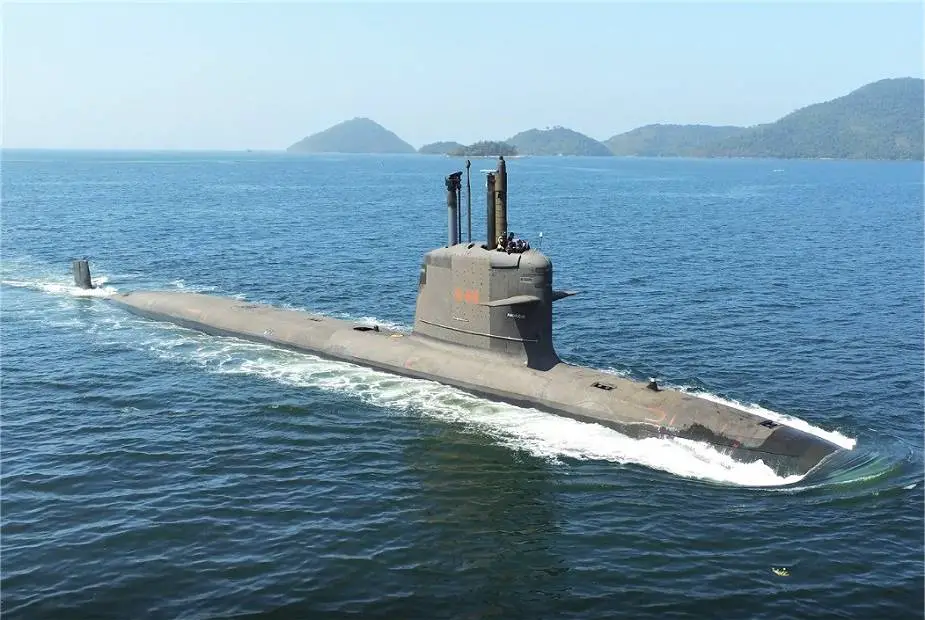On August 12, another important milestone was accomplished within the scope of the Submarine Development Program (PROSUB), when the Scorpene-Class submarine submarine “Riachuelo” (S 40) successfully performed the tests foreseen for the surface propulsion system, in continuation to the extensive acceptance testing program at sea. The rudders, the navigation and propulsion system, the diesel generators, the battery charges, and the communication system were tested at sea. All tests have been carried out more than 8 nautical miles (approximately 15 km) from pier 12, its starting point of the Construction Shipyard (ESC), located at the Submarine Base of Madeira Island (BSIM). Launched on December 14 2018, the Riachuelo started its trials in September 2019, successfully completing its first static dive test on 20 November 2019.
In 2009, Naval Group was entrusted by the Brazilian Navy with designing and transferring the technology for four conventional Scorpène® submarines, and for the design and manufacturing assistance for the non-nuclear part of Brazil’s first nuclear-powered submarine. The launching of the Scorpène® Riachuelo in presence of the Brazilian head of state today demonstrates the success of this program, with both the successful completion of the first submarine and of the shipyard’s infrastructure. The latter is being built by a Brazilian company, Construtora Norberto Odebrecht (CNO), based on Naval Group specifications and on the French group’s experience in the design, production engineering and in-service support of submarines. The Riachuelo will start sea trials in 2019 for delivery in 2020. Delivery of submarines 2, 3 and 4 will then follow every 12 to 18 months.

Since 2012, Naval Group has done considerable work to identify, select, negotiate, qualify Brazilian service providers in order to: feed the supplier database for equipments or products supplied by Naval Group to the Brazilian Navy and and to present and qualify local suppliers for the future needs of the Brazilian Navy. This work enables the Brazilian Navy to rely more and more on a sovereign national industrial base. It also enables the Brazilian industrial ecosystem to access new markets by promoting their “Naval Group” and “Brazilian Navy” accreditation (whose image of excellence and seriousness is highly regarded in Brazil) and to avail of the know-how and experience of the French group in the fields of project management.
Scorpène® is the conventional submarine designed by Naval Group for the export market. It demonstrates both Naval Group’s ability to deliver best in class submarines and to conduct successful transfers of technology. Today 14 Scorpène® submarines are in operational service or being built, for the Chilean Navy (2 units), the Malaysian Navy (2 units), the Indian Navy (6 units) and the Brazilian Navy (4 units). The Scorpène® design is adapted to fit each navy’s specific requirements. Thus, the Brazilian Scorpène® will be slightly longer to carry a larger crew, almost double the patrol range, and be able to cover greater distances. Multipurpose, it fulfils the entire scope of missions such as anti-surface and anti-submarine warfare, special operations, offensive minelaying and intelligence gathering.















